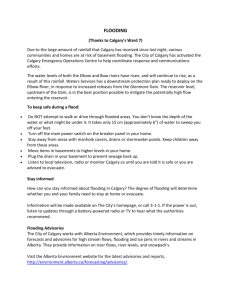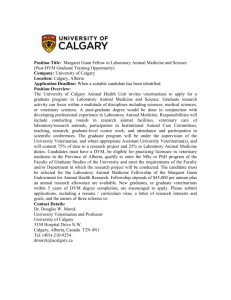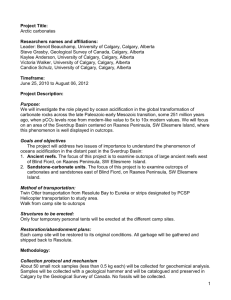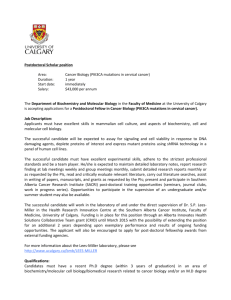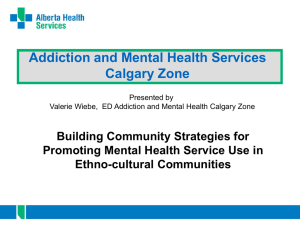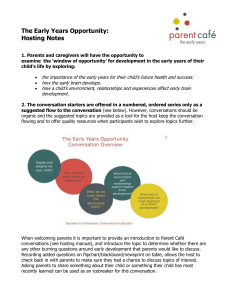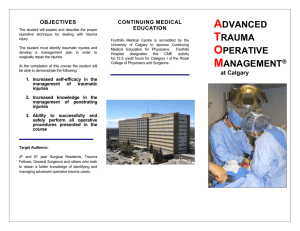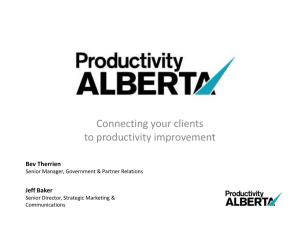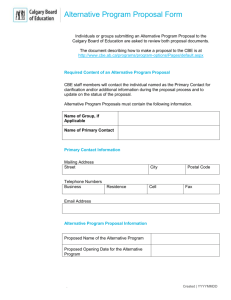Supporting Children/Youth Through Enhanced Mental
advertisement
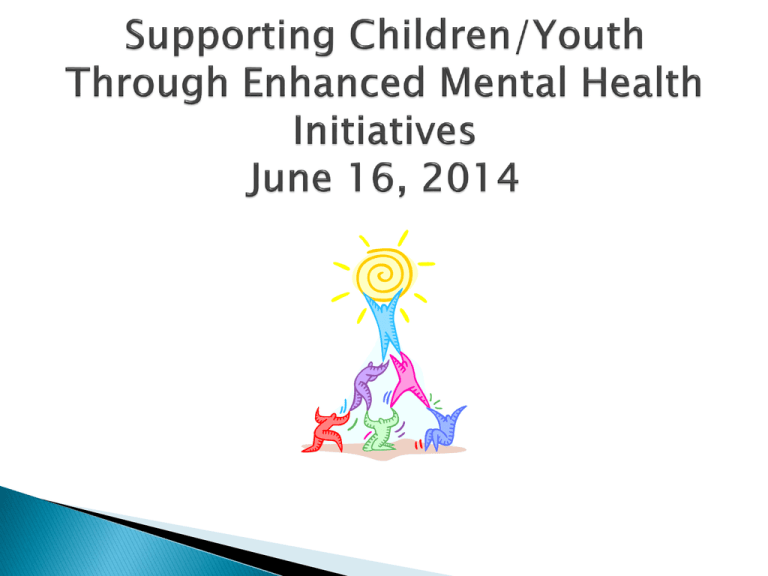
The context: Increase in joint planning between Alberta Health, Alberta Health Services and Human Services Focus on children/youth involved with Child Intervention Services Commitment to increased funding to better support these children, youth, their caregivers and our staff 2014: Appointment of a Chief Medical Officer for Mental Health and Addictions to lead the work - Cross Ministry Partnership Creating an Action Plan Priorities for Alberta Identified Need for children in care Continuation of 2013 funding Announcement of 2014 funding Mental ealth Learning Series Mental Health First Aid Support to Parent Link Centres Initial after hours support – launched in Edmonton Crisis Unit Best Practice Sites: Calgary, Edmonton and Red Deer Mental Health Consultation regarding psychotropic medications and psycho-social interventions: 2 positions serve the province Assessment and Brief Intervention: Calgary project “Brief Intervention and Caregiver Support” BICS for short. Calgary’s site is at Hull Homes Reshaping of the Pre-Adolescent Treatment Program With additional funding a day treatment / wrap-a-round service has been added to the program Purpose is to support more children in their family based placement by the provision of treatment support after school, evenings. Family based care is the environment of choice Provides the type of support a caregiver needs to develop effective interventions in the home environment with the support of highly skilled professionals from the Hull program Caregiver is an integral part of the treatment team and is actively involved in planning and implementation of strategies that will work in a home environment Decreases the impacts of residential care on young children – trauma reduction Many children involved with child intervention are prescribed psychotropic medications Ritalin and other ADHD related medications Anti-psychotic medications Mood stabilizers Implementation of treatment plans/strategies recommended by mental health professionals may be a part of a child’s plan Implementing in a home based environment may require additional support, revision, clarity and skill building on the part of adults involved in supporting the child/youth Sheena Stevens, BN. RN. CPMHN(c) Registered Nurse Certified psychiatric mental health nurse (CPMHN) from the Canadian Nurses Association. Experience in medical, oncology/ palliative care and adolescent child acute mental health. Past 3 years at the Alberta Children’s Hospital in-patient mental health unit and at the Foothills Medical Center at the Young Adult Program (YAP) unit 26 in Calgary. Alberta. Working in partnership with Child and Family Services and Dr. Roxanne Goldade (P-KIC physician lead) She will be consulting with our staff You may see her at a P-KIC appointment She may follow up with you regarding medication trials or new medication responses, medication adjustments that pediatricians have prescribed You can access Sheena through the child’s caseworker or your foster care/kinship care support worker Contact information will be forward to Agency foster care and Kinnections this week A collaboration between Calgary Family Service, Catholic Family Service and Calgary Counselling Centre Bringing the 3 agencies together allows for a wide range of skill and areas of expertise among the team One clinician from each agency has been recruited and are currently being trained Soft launch – a few cases over the summer September targeted for full implementation A new approach to caregiver support Home based early intervention Trauma/toxic stress reduction Creating a strong support network for each child and their caregiver Community focussed Implementation of individualized profiles and plans Approximately 3 working days after a child is placed a referral will be made to BICS The Clinician assigned will contact the caseworker, foster care/kinship support worker and the caregiver You and the clinician will do an initial screen over the phone to see how the child is doing and using the Green, Yellow, Red approach a plan for an in person first meeting will be made You will likely get a follow up phone call just to check in and see if there are any emerging issues that might warrant an earlier connection with you A screening tool focussing on trauma will be completed to obtain a baseline of how the child is coping ◦ ASQ/ASQ SE age 0-5 ◦ Trauma Symptom Checklist for Young Children • ages 3-12 ◦ Trauma Symptom Checklist for Children Ages 8-17 ◦ Other screening tools as appropriate A profile of the child/youth will be created with you and input from others in the child’s support network – family, school, … If needed a positive behavioral approach plan will be developed or a developmental plan or whatever will best meet the child’s needs and assist with caregiving. The plan should be transferable to other environments – respite, school, family home Length of involvement will be flexible and individualized You can re-enter the program for further support if the need arises New and needed opportunities for Children’s Mental Health Priority on children involved with Child Intervention recognizes that coming into care is another traumatic event for a child The research of the brain, toxic stress and interventions that work is at a critical place to inform this type of work A team approach is the only approach that works for a child/youth


